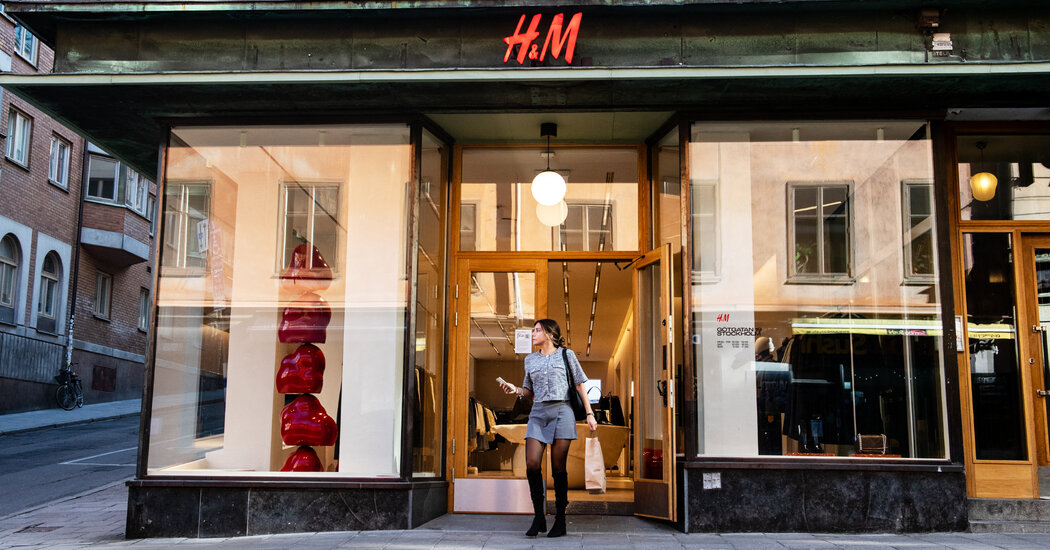H&M’s Digital Twin Project: Innovations and Implications
This week, H&M introduced a bold initiative involving the use of artificial intelligence (AI) in modeling, showcasing both real and digitally generated images of model Mathilda Gvarliani. This innovative approach aims to harness technology for future marketing strategies while igniting discussions about ethical practices within the fashion industry.
Introducing Digital Replicas
In a recent photo shoot, Gvarliani posed in a white tank top and jeans. One of the striking images features her in a casual pose, while the other presents a digitally manipulated version with crossed arms. Accompanying these images is Gvarliani’s quote, “She’s like me, without the jet lag.” This marks her involvement in a larger project where H&M is collaborating with over two dozen models this year to create digital duplicates for advertising and social media use.
Industry Concerns
H&M’s venture into the realm of digital modeling reflects a broader industry trend that has raised concerns among fashion professionals. Critics worry about the implications of using AI-generated models on employment opportunities for human models, hair stylists, makeup artists, and other vital contributors in the modeling ecosystem.
H&M’s Approach to AI Integration
Hacan Andersson, a spokesperson for H&M, emphasized that the company is currently in the exploratory stages. “We are merely exploring what is possible, and we are doing so in close collaboration with other creatives within the industry, agencies, and the models themselves—who are in full control of when the ‘digital twin’ would be used, and will of course get paid when it is being used,” he stated.
Jorgen Andersson, Chief Creative Officer, highlighted the necessity of maintaining a “human-centric approach” in utilizing AI, asserting H&M’s commitment to creativity while leveraging technological advancements without losing sight of individual models’ rights.
Legislative Developments
The Fashion Workers Act, effective in June in New York State, aims to address concerns surrounding the use of AI in modeling. This law introduces measures to protect models, including pay transparency and control over the use of their digital replicas. State Senator Brad Hoylman-Sigal remarked that the legislation is designed “to protect fashion models from being financially abused and having their images used without their consent.”
Broader Context in AI Regulation
Other states and certain European nations have initiated discussions regarding rights associated with digital representations. However, New York’s new law focuses specifically on the modeling sector, a response to incidents where models have found unauthorized images manipulated into their work.
Sara Ziff, founder of the Model Alliance, raised vital points regarding the indistinguishability of AI-generated images and the ensuing issues of consent and compensation, cautioning that this trend could potentially marginalize a significant number of fashion workers.
Evolution of AI in Fashion
The application of digital representations has been in progress within the fashion sphere for several years. H&M previously merged real models with computer-generated mannequins in 2011 and recently, Levi Strauss announced plans to employ AI technology to present a diverse array of body types without diminishing the presence of live models.
The Model Alliance has expressed its intention to review H&M’s digital initiative, which pairs models alongside their virtual counterparts, often featuring positive affirmations from the models themselves regarding their digital twins. For instance, model Yar Aguer commented, “Finally a way for me to be in New York and Tokyo on the same day.” This illustrates the enthusiasm that some models feel about the potential of digital replication technology.
Conclusion
As H&M delves deeper into the prospective benefits and challenges associated with digital modeling, the implications on labor, ethics, and the art of fashion are becoming increasingly urgent. The outcomes of such innovations will depend not only on technical advancements but also on how well they are governed to protect the rights and livelihoods of individuals in the fashion industry.


